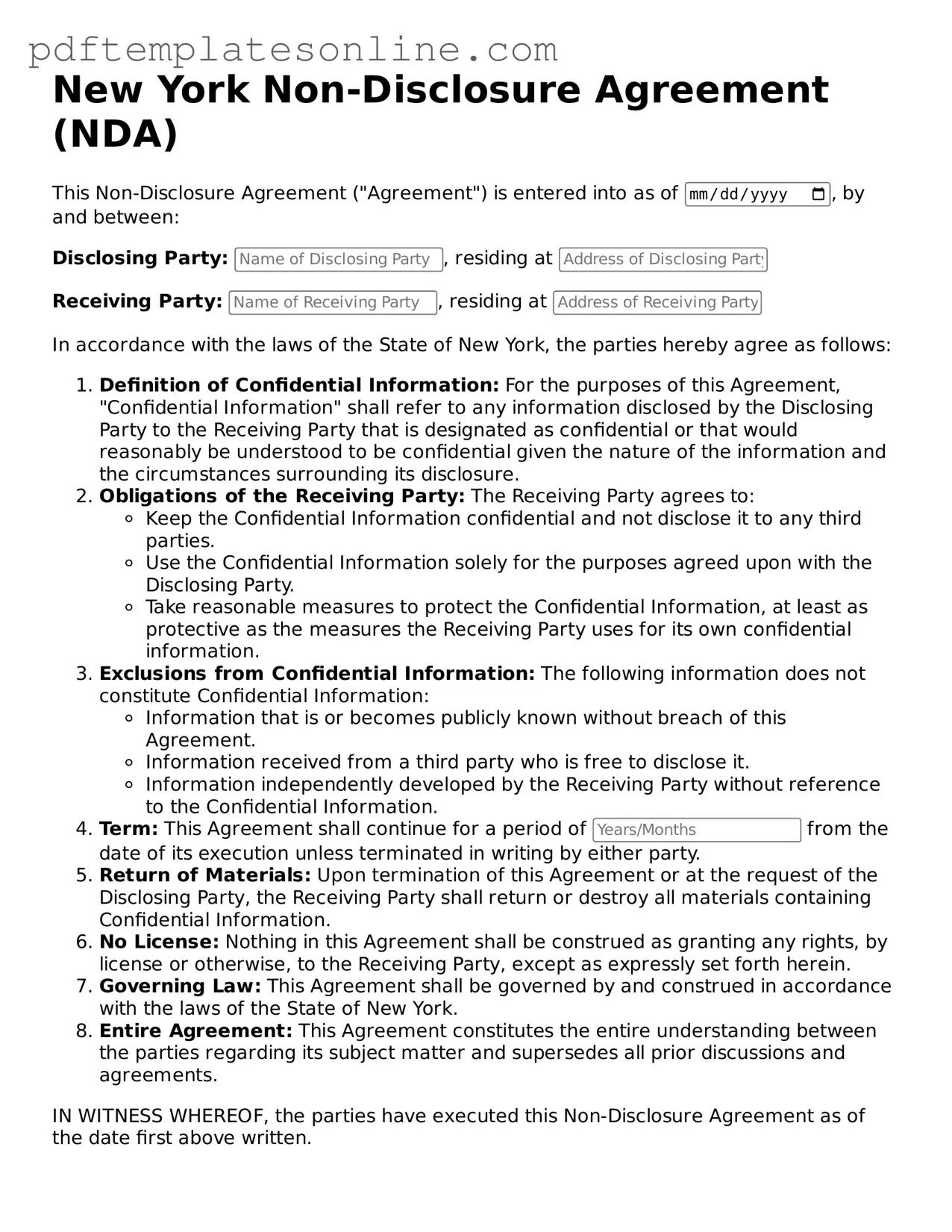Filling out a Non-disclosure Agreement (NDA) in New York can be straightforward, but several common mistakes can lead to complications. One frequent error is failing to clearly define the confidential information. Without a precise description, parties may have differing interpretations of what is protected, leading to potential disputes.
Another mistake involves neglecting to include the duration of the confidentiality obligation. An NDA should specify how long the information must remain confidential. Omitting this detail can create uncertainty and weaken the enforceability of the agreement.
People often overlook the importance of identifying all parties involved. An NDA should explicitly name everyone who will have access to the confidential information. Failing to do so can result in unauthorized disclosures and legal challenges.
Additionally, individuals sometimes forget to address the consequences of a breach. It is crucial to outline the repercussions for violating the NDA. This information serves as a deterrent and clarifies the expectations for all parties.
Another common error is using vague language. Ambiguous terms can lead to misinterpretation. Clear and specific language is essential to ensure that all parties understand their rights and obligations.
Lastly, many people neglect to review the agreement thoroughly before signing. It is vital to read through the entire document to catch any mistakes or unclear sections. Taking the time to review can prevent misunderstandings and protect everyone involved.
